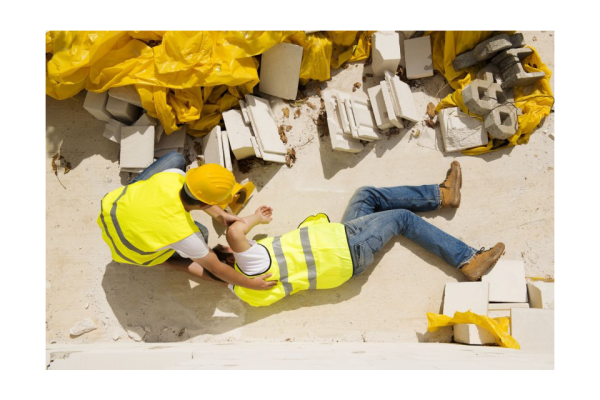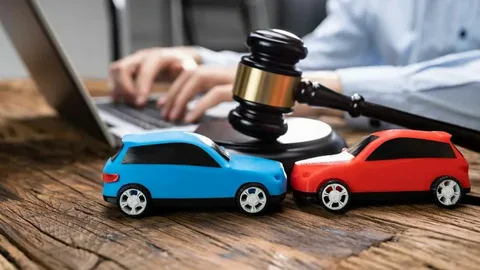Any Ccar accident results in injuries and vehicle damage that costs thousands of dollars on medical bills, car repairs, etc. But the consequences are even steeper in a chain reaction car accident, where multiple vehicles and people are involved. Such car pile-ups are very common in Florida. According to a survey, approximately 200,000 car crashes are recorded in Florida every year.
With such statistics, every driver in Florida is at risk by default. Even if you have insurance in place, claiming it can be difficult in chain reaction car accidents due to liability issues. You should know what to do if you ever find yourself in a similar situation.
This article will discuss what happens in Florida’s chain reaction car accidents and how liability is determined.
What Iis a Chain Reaction Car Accident
Before we move on to what to do in a chain reaction car accident, let’s first understand what it is and how it occurs. A chain reaction crash is when three or more vehicles are involved in a series of collisions caused by a first single collision.
A chain reaction car accident occurs when a single car crashes into another, and the force causes a series of car pile-ups. This happens on narrow roads or in crowded areas, and thus, Florida has a high rate of multiple-car crashes.
When multiple vehicles are involved, it is difficult to determine liability. In Florida, if the damages equal less than $10,000, the amount is covered by personal injury protection coverage. But if the amount exceeds this limit, determining who is at fault becomes necessary.
Negligent Driving Behavior in Florida That Leads to Chain Reaction Crash
Chain reaction car accidents are caused due to negligent behavior while in driving. Every country and state has certain rules when it comes to driving. If a driver fails to follow the rules of the roadthese rules, they have a higher chance of causing a chain reaction multiple car accidents.
Negligent behavior that causes chain reaction car accidents in Florida includes:
- Texting or talking on the phone while driving.
- Speeding
- Driving while intoxicated.
- Driving under the influence of drugs or alcohol.
- Not wearing a seatbelt.
- Driving on the wrong side of the road.
- Driving without lights on at night.
- Not indicating when changing lanes.
- Driving a malfunctioning vehicle.
- Driving an unregistered vehicle.
Many other negligent driving behaviors can lead to multiple-car accidents. But that still doesn’t determine who’s at fault. Thus, an investigation is carried out, and you need a personal injury lawyer to assist you. For example, the Boynton Beach Car Accident Lawyers in Florida can provide free legal advice and review the details of your claim to help you understand the ins and outs of your caseassist you better.
Comparative Negligence
While it is easier to blame the driver that caused the first collision in a chain reaction accident, it may not always be the case.
For example, let’s take 3 vehicles, defined as A, B, and C. If driver A was driving negligently and rear-ended driver B, and the force caused driver B to rear-end driver C, then driver A is at fault. But what if driver B was also negligent and the accident is because of both driver A and B; what do you do thento do then?
In such cases, Florida’s Comparative Negligence law is used. This rule is used when both parties are at least somewhat at fault. If a driver who files the lawsuit is partially responsible for the damage, both parties have to pay their share amount of the damages caused. This is why legal representation is necessary to assist with false claims.
Who is Liable When Multiple Vehicles/Injuries Are Involved?
As stated above, liability determination in a chain reaction car accident can get extremely complicated if four or more vehicles are involved. Let’s take another example to explain how multiple-car accidents occur. There are 3 cars on the road; a white car, a black car, and a graey car. The white car is stopped at a red light; the graey car is driving faster than the speed limit and is following close behind. The black car at the end is driving while texting and rear-ends the graey car, which rear-ends the white car.
Instead of just blaming the black car, we have to see how the graey car was also negligent, and if they had maintained a safe driving distance, maybe the white car would have remained undamaged. The process can get even more complex when more than 3 vehicles are involved.
We recommend seeking out Boynton Beach Car Accident Lawyers in Florida to assess your particular situation and proceed accordingly to the law.
What Evidence is Gathered For Chain Reaction Car Accident?
It is important to gather the appropriate evidence to make the liability determination easier so no false claims are made. This evidence can include:
- FLHSMV crash reports
- Victim testimonies Witness testimonies
- CCTV footage
- Injuries
- Weather conditions
- Road conditions
This evidence can shift liability from usual suspects and help you get compensated for your damages. Also, remember that Florida is a no-fault state, which means accident victims have to go through their insurance and use their Personal Injury Protection coverage before they claim compensation from another victim in athe multiple-car crash.
Should You Get Car Accident Lawyers?
The no-fault law in Florida isn’t foolproof. Instead, it encourages people to disregard driving rules as they have to pay for any damages regardless of their good or bad driving. If you are not aware of the laws regarding road safety, driving rules, and insurance claims in multiple-car accidents, you need expert advice and legal representation.
Boynton Beach Car Accident Lawyers provides diligent legal representation and excellent case management according to your particular situation. They help guide you through the insurance claim process by examining your medical records, vehicle damages, accident cause, and more. Call them now for a free in-house or hospital consultation.





